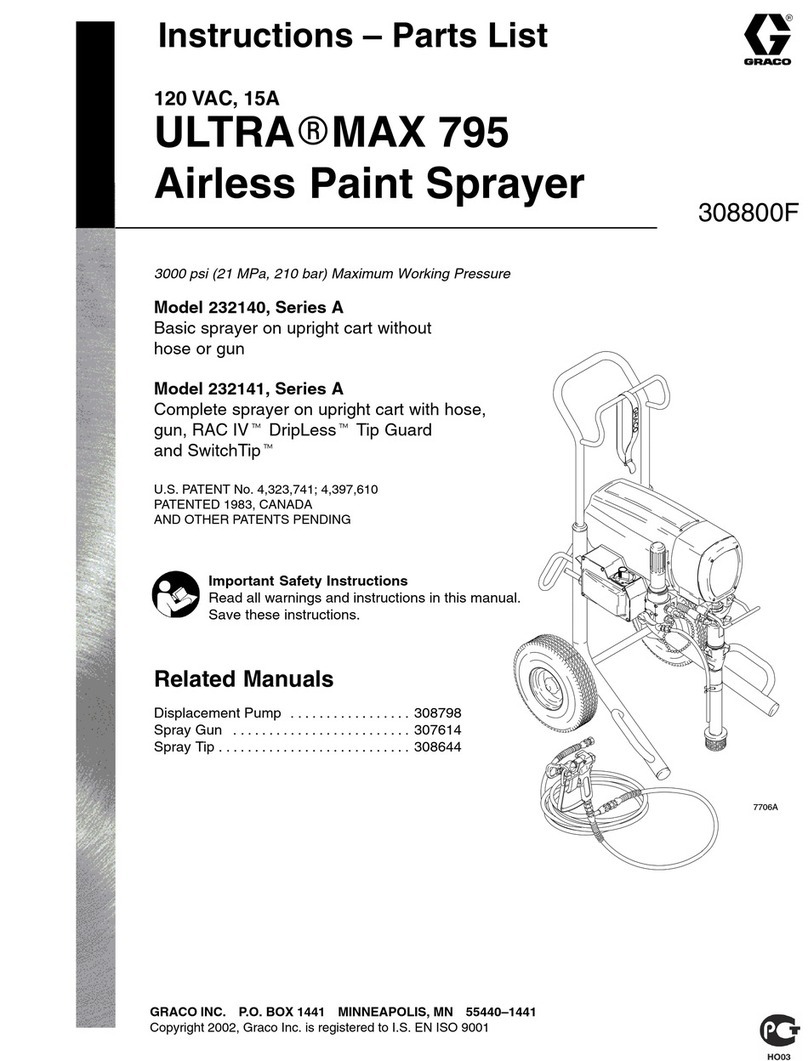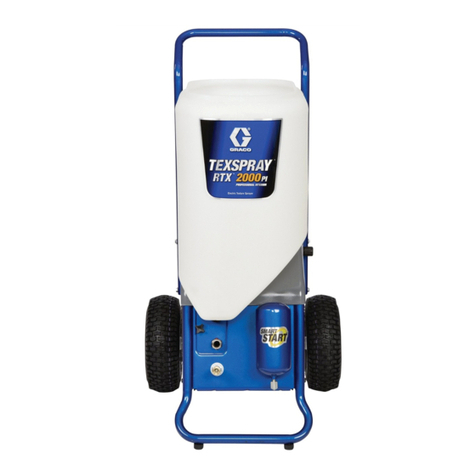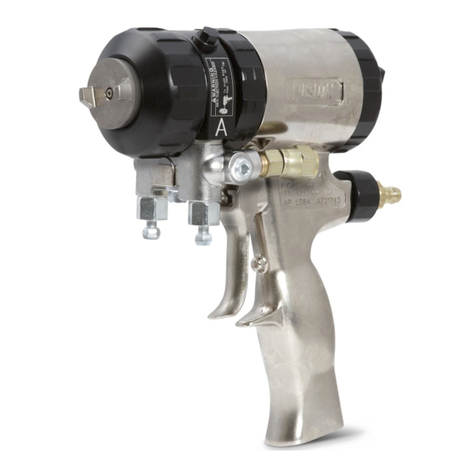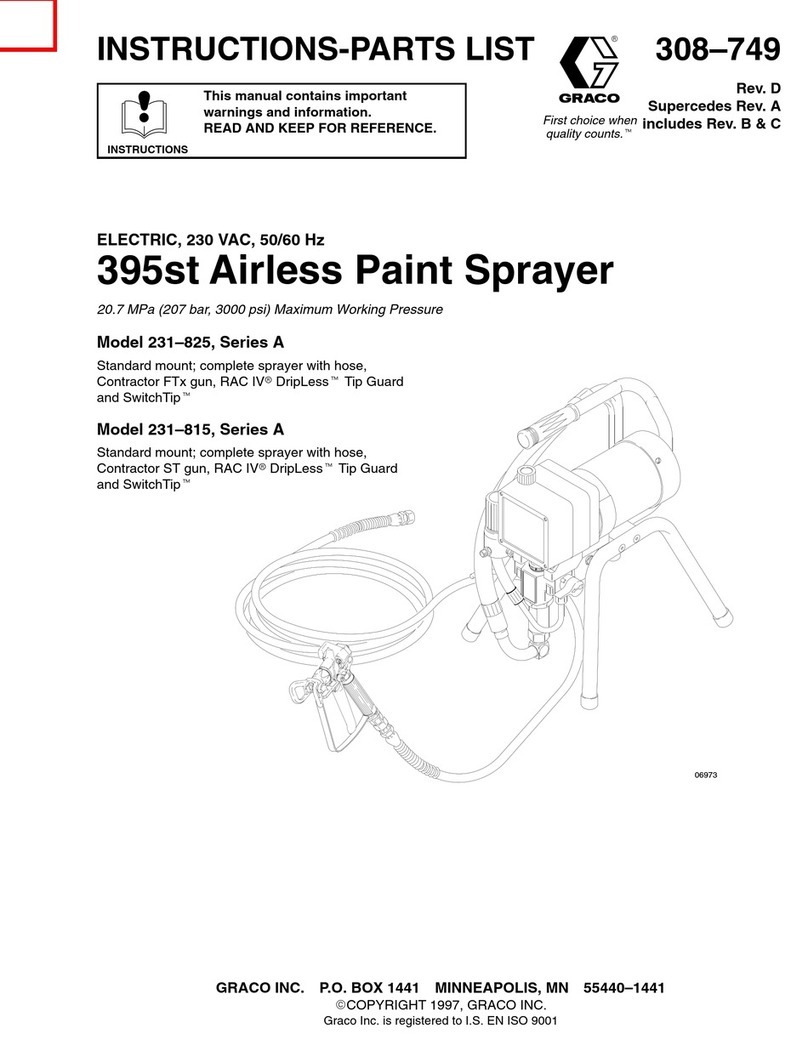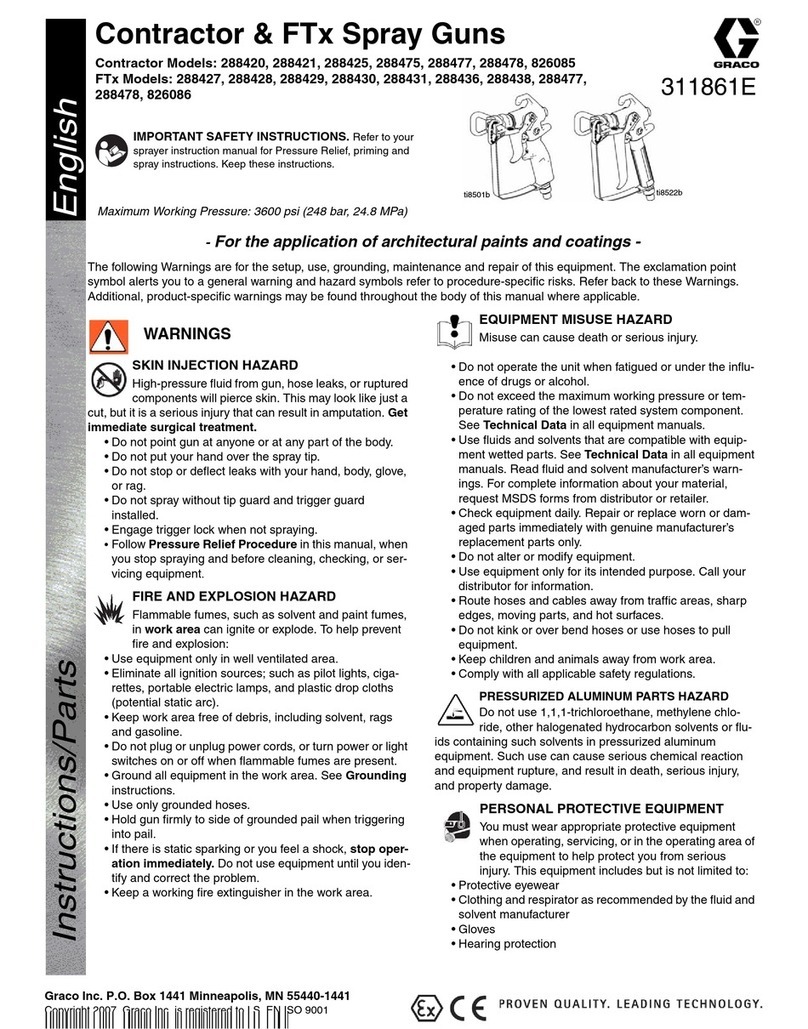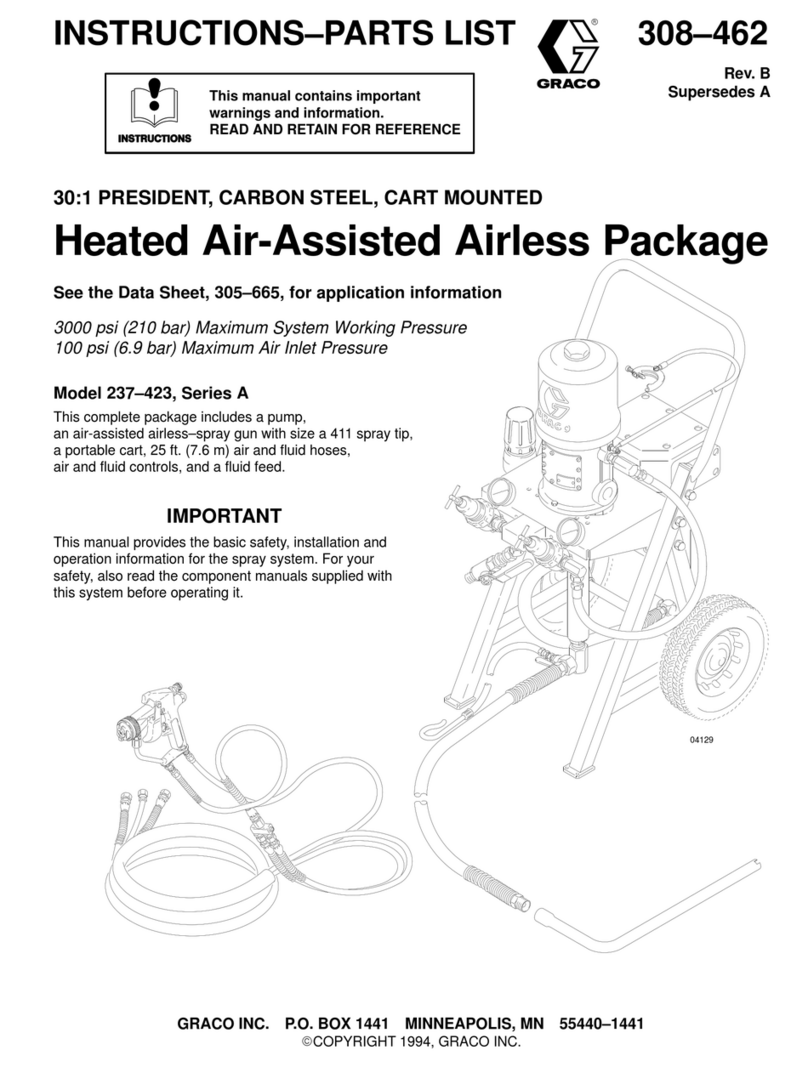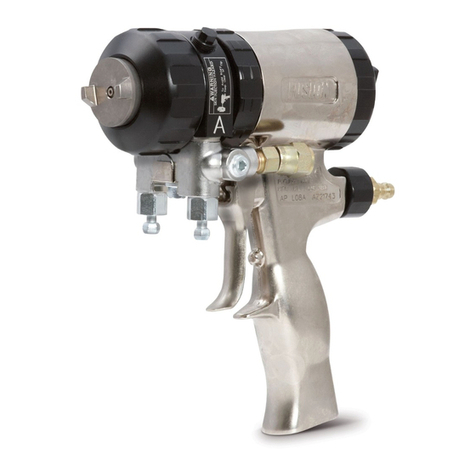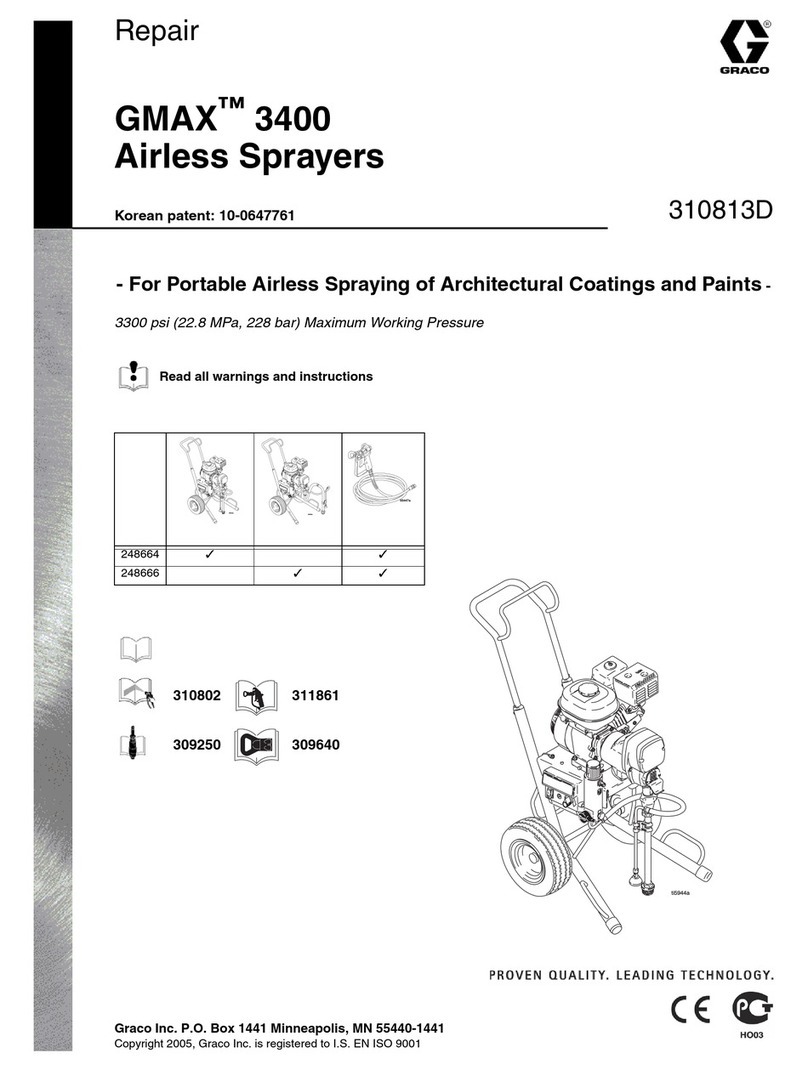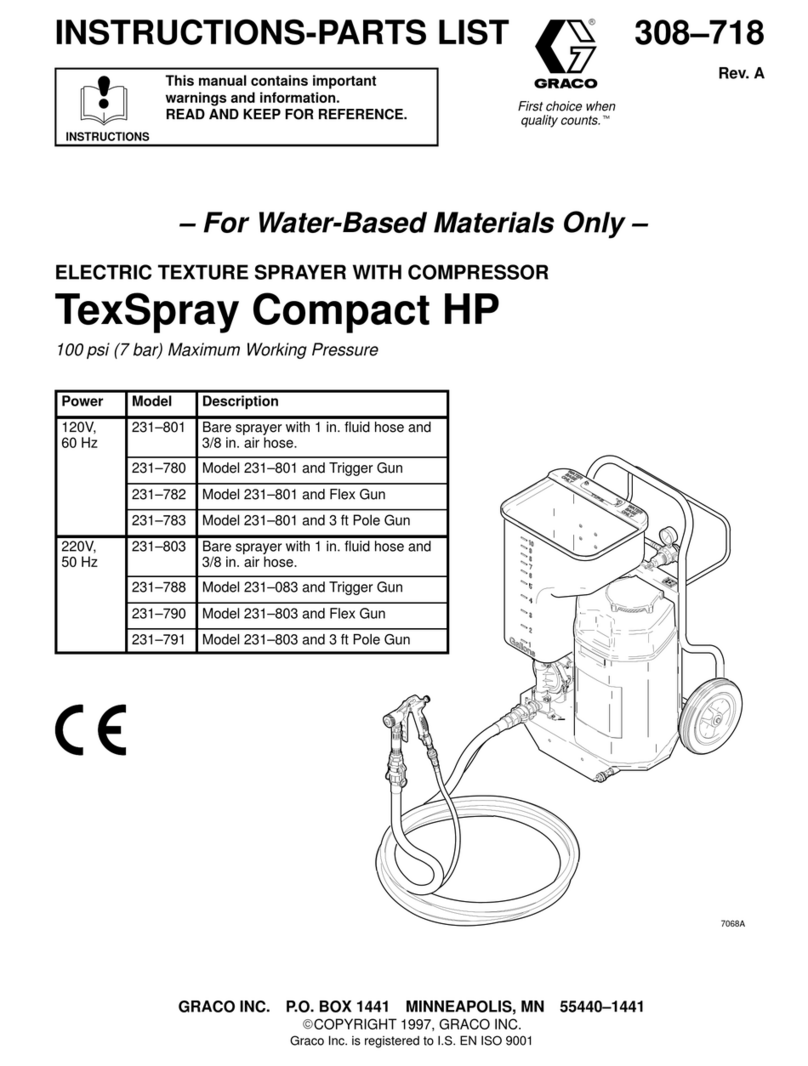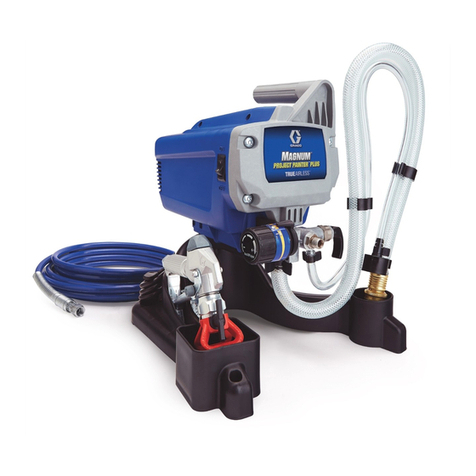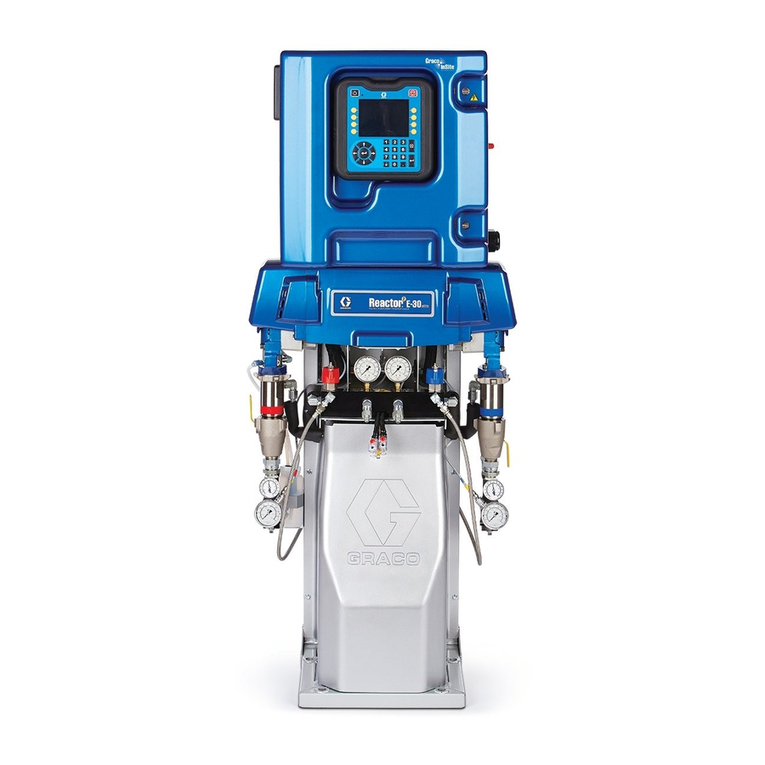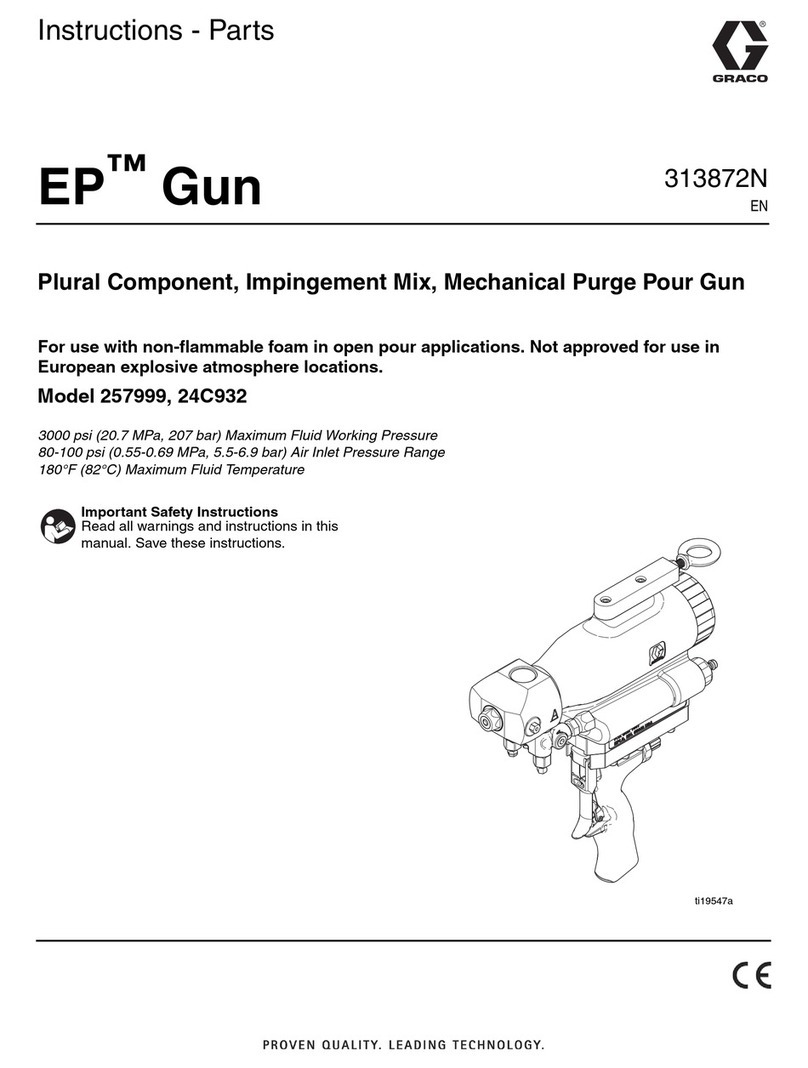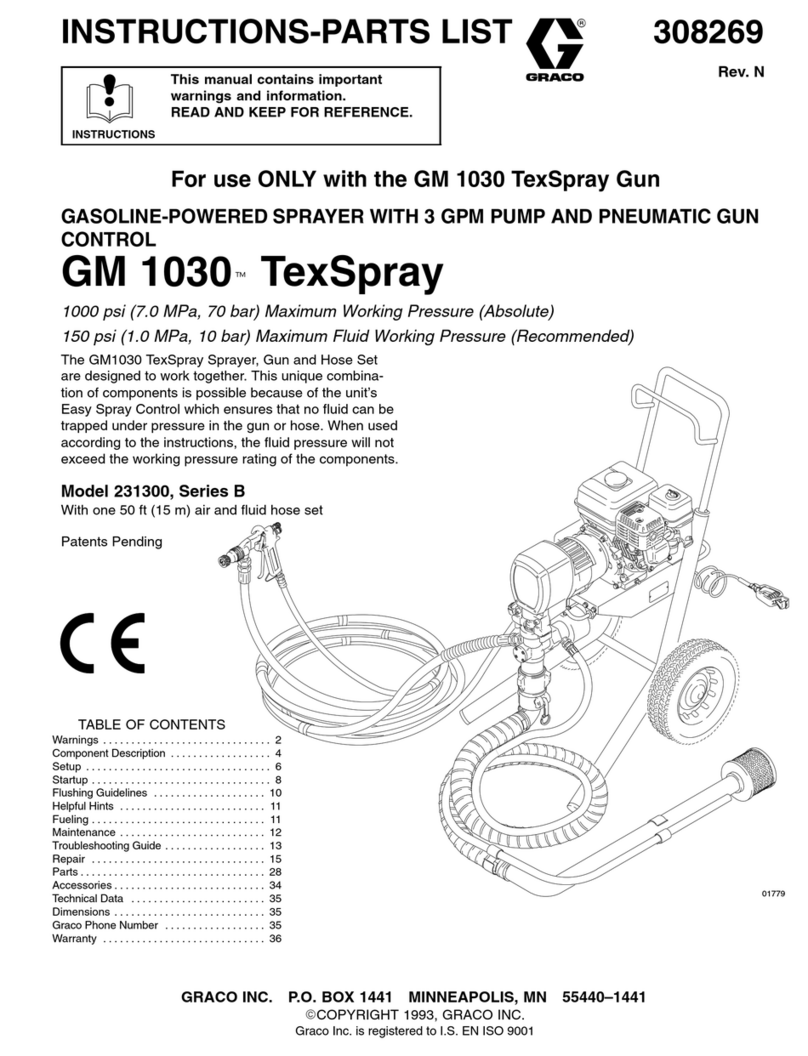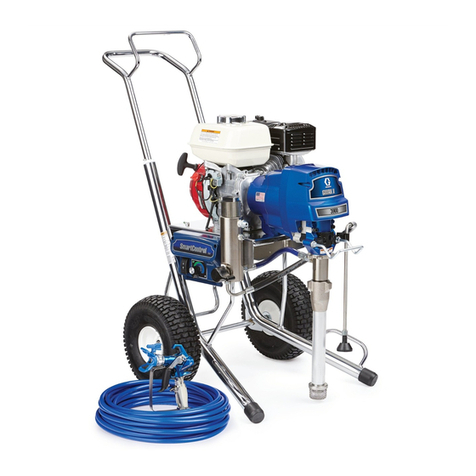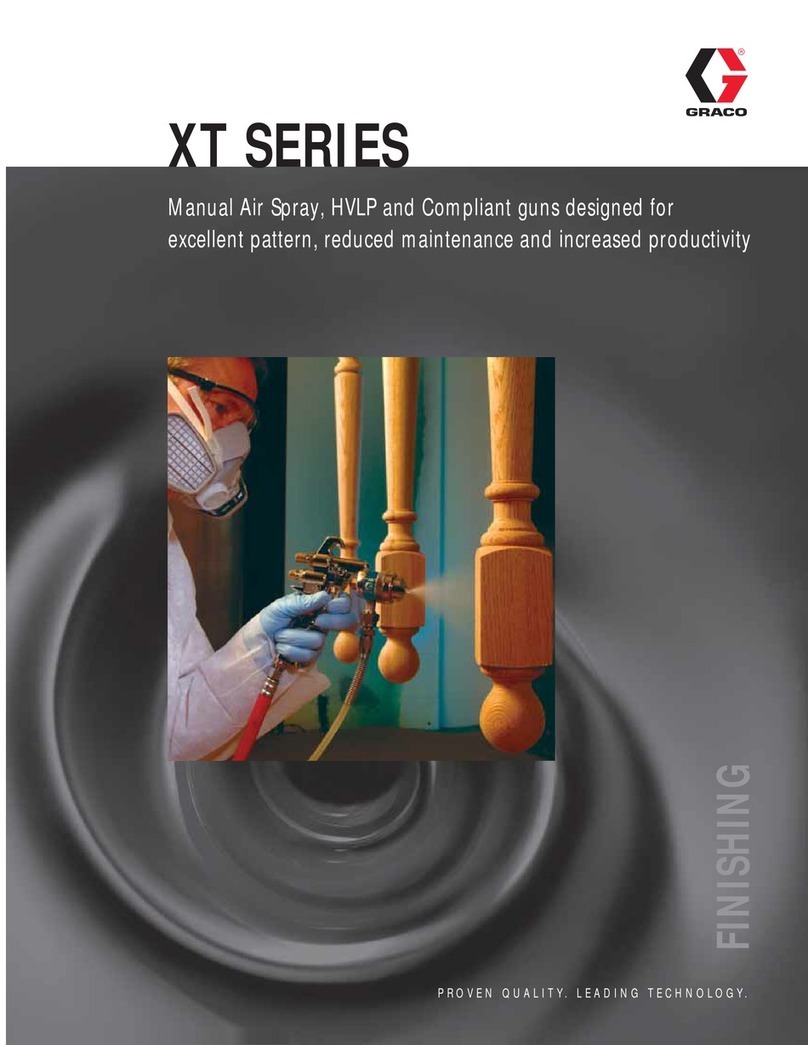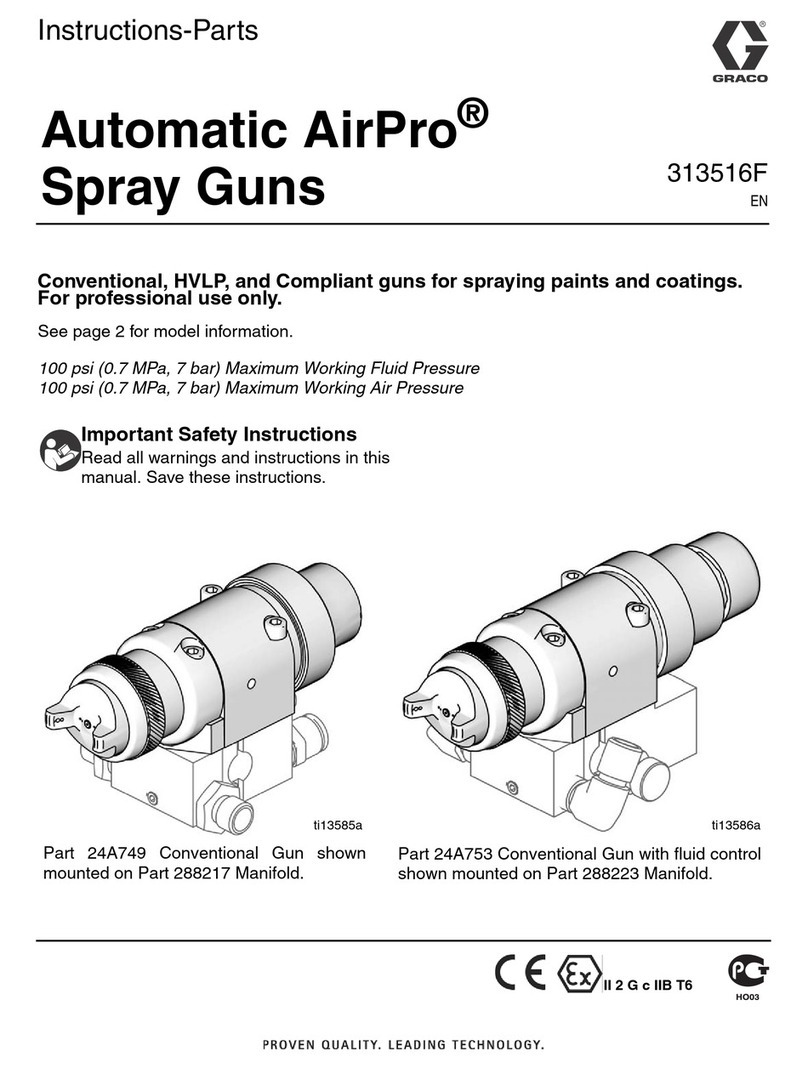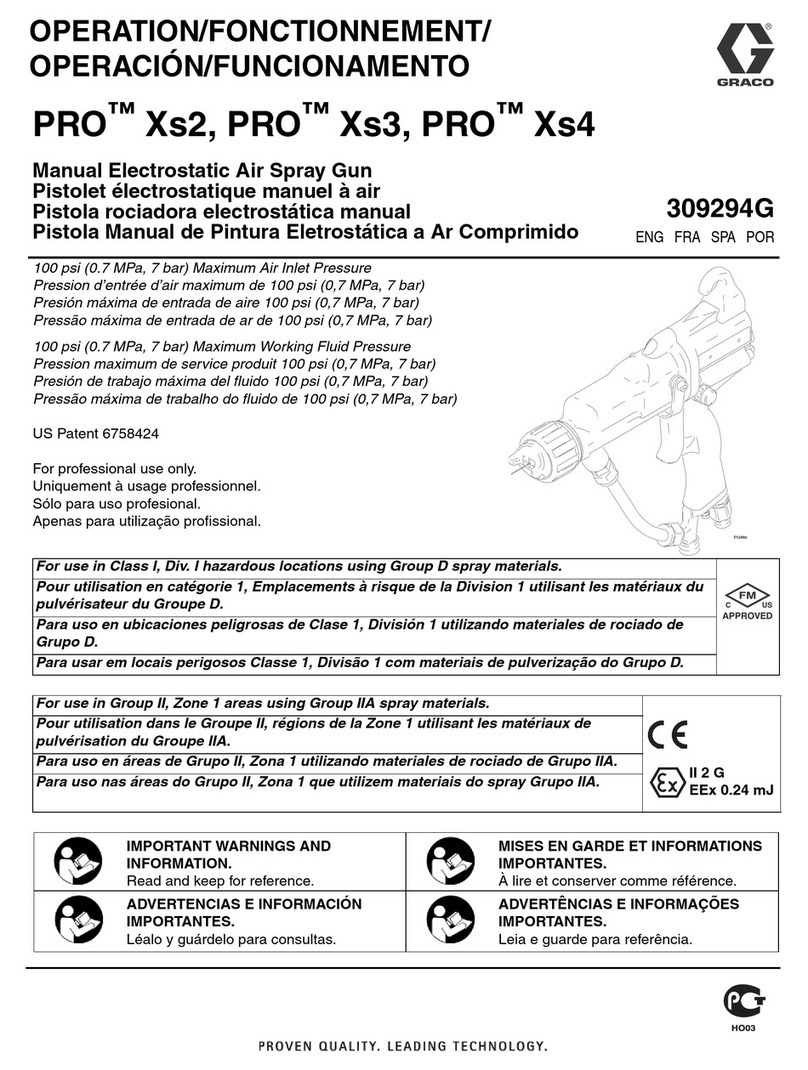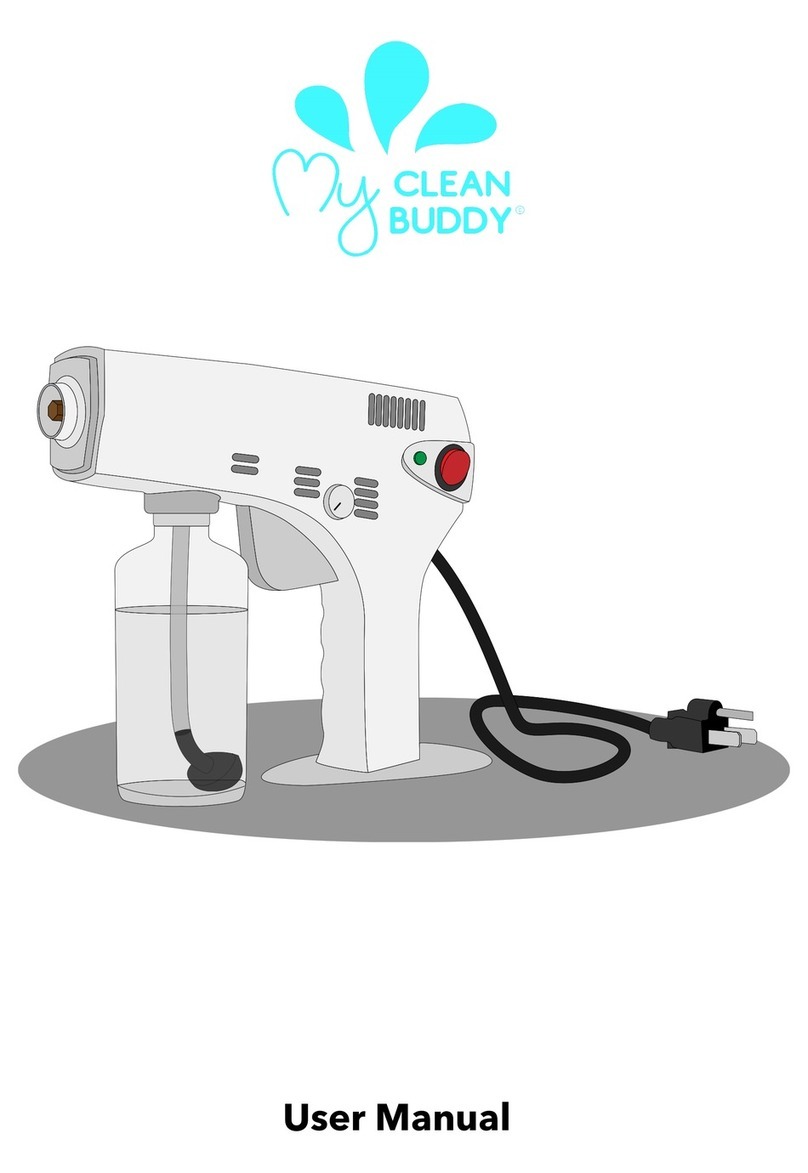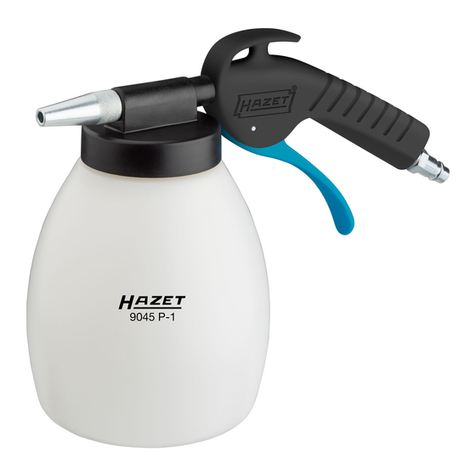
EQUIPMENT MISUSE
HAZARD
General Safe
Any misuse oft
3;
e spray equipment or accessories, such
as
Allchemicalsusedinthesprayermustbechemicallycompatible
ovemressurizina. modifvina Darts, usina incompatible chemi- with'the wetted parts given
in
the TECHNICAL DATA
on
page
Fluid
and
Solvent Compatibility
calsandfluids,o);singwornordamage~parts,cancausethem
44.
Consult your chemical supplier to ensure compatibility.
.
-.
toruPtureandresuitinfluidinjection,splashingintheeyesoron
Donotuse1,1,l~trichloroethane,methylenechloride,otherha~
the skin, or other serious bodily injury, or fire, explosion or prop-
logenated
hydrocarbon
em/ damage.
or
fluids
containing
such
vents
in
this equipment, which contains aluminum and/or zinc
oarts. Such usecould
resuitinaseriouschemicalreaction,
with
Alwayswearprotectiveeyewear,gloves,clothingandrespirator
mumworkingpressureofanycomponentoraccessoryusedin
as recommended by the fluid and solvent manufacturer. the system.
HOSE
SAFETY
High pressure fluid
in
the hoses can be very dangerous.
If
the Handle and route hoses carefully.
Do
not pull
on
hosesto move
damageormisuse,thehighpressuresprayemittedfromitcan ofthepumpandgasengine.Donotusefluidsorso1ventswhich
hose develops a leak, split or rupture due to any kind of wear, equipment. Keep hoses clear of moving parts
and
hot surfaces
cause a fluid injection injury or other serious bodily injury or
arenotcompatiblewiththeinnertubeandcoverofthehose.DO
property damage.
NOTexposeGracohosetotemperaturesabove82D
Corbelow
All
tluld
hoses
must have sprlng guards on both endsl The
-40"
spring guards help protect the hose
from
kinks or bends at
or
closet6 the coupiing which can result in hose rupture.
Hose
Grounding Continuity
all
fluid
securely
before
each
use,
High
Proper hose grounding continuity is essential to maintaining
a
groundedspraysystem.Checktheelectricalresistanceofyour
onitwhichsoecifiesthemaximumelectricalresistance.contact
pressurefluidcandislodgealoosecouplingorallowhighpres-
~uidhosesatleastonceaweek~,,your~~se~o~sn~~~a~~atag
sure spray to be emitted from the coupling.
NEVER useadamaged hose. Beforeeach use, checktheentire the hosesupplier or manufacturer for the maximum resistance
hose for cuts, leaks, abrasion, bulging cover, or damage or limits. Use a resinance meter
in
the appropriate range for your
replacethehoseimmediatelv.DONOTtrytorecouplehighDres-
ommended limits, replace
it
immediately.
An
unarounded or
.
i
movementofthehosecouplings.
lfany oftheseconditionsexist, hose to check the resistance. If
the
resistance exceeds the rec-
sure hose or mend
it
with tape or any oiher device.
A
&paired poorly grounded hose can make your system hazardous.
Also
hose cannot contain the high pressure fluid. read
FIRE
OR
EXPLOSION HAZARD.
FIRE
OR
EXPLOSION
HAZARD
and hose. If every part of the spray equipment is not properly
Staticelectricityiscreatedbytheflowoffluidthroughthepump
grounded, sparking may occur, and the system may become
hazardous. Sparking may also occur when plugging in or un-
plugging a power supply cord or using a gasoline engine.
Sparks can ignite fumes from solvents and the fluid being
sprayed, dust particles and other flammable substances,
whether you are spraying indoors or outdoors, and can cause
a fire or explosion and serious bodily injury and property dam-
age.
Ifyouexperienceanystaticsparkingorevenaslightshockwhile
the entire system for proper grounding.
Do
not use the system
usingthisequipment,STOPSPFlAYlNGIMMEDIATELY.Check
again until the problem has been identified and corrected.
To reduce the risk of static soarkina. around the soraver and all
Grounding
other spray equipment used or-located in the sljray area.
tions for your area and type
of
equipment. BE SURE
to
ground
CHECKyourlocalelectricalcodefordetailedgroundinginstruc-
all of this spray equipment:
1.
Sprayer: connect a ground wire and clamp (supplied) to a
true earth ground.
2.
Fluidhosest use only grounded hoses with a maximum of
150mcombinedhoselengthtoensuregroundingcontinu-
ity. See Hose Groundlng Contlnulty.
3.
Spraygun:obtaingroundingthroughconnectiontoaprop-
erly grounded fluid hose and sprayer.
4.
Object being sprayed: according to local code.
5.
Fluid
suppby
container: according to local code.
6.
All
solvent pails used when flushing, according to local
code.
Use
only metal pails, which areconductwe.
Do
not
placethepailonanon-conductivesurface,suchaspaper
or cardboard, which interrupts the grounding continuity.
7.
To
maintain
grounding
continuify when flushing
or
relieving
prsssure, always hold a metal pati of the gun firmly to the
side of a grounded metal pail, then trigger the gun.
Flushing
Safety
AeducetheriskofRuidiniectioniniurv,staticsparkina,orsplash-
ing byfollowing
theflushhgprocediregivenonpa~e
11 iind 12
ofthis manual. FollowthePressure
Rsllef
Procedureon page
the gun firmly to the side of a grounded metal pail and use the
4,
and remove thespray tip beforeflushing. Holdametal partof
lowest possible fluid pressure during flushing.
-
MOVING PARTS
HAZARD
-
Moving parts
can
pinch or amputate your fingers or other body
parts. KEEP CLEM of moving parts when starting or operating
the sprayer. Follow the Pressure
Rsllef
Procedure
on
page
4
before checking or servicing any part ofthe sprayer, to prevent
it
from starting accidentally.
-
IMPORTANT
-
UnitedStatesGovernmentsafetystandardshavebeenadopted
undertheOccupati0nalSafetyandHealthAct.Thesestandards
struction Standards, Part 1926
-
should be consulted.
-
particularly the General Standards, Part 1910,
and
the Con-
.."
"*
c
